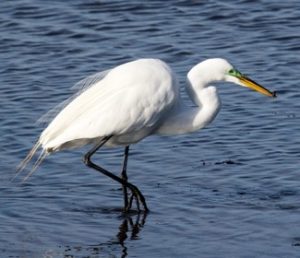Purple Sandpiper
Calidris maritima

Physical: Purple sandpipers have rounded bodies, long legs, and long, thin beaks. Their legs and beak are yellow-orange with black on the end of the beak. The underside is pale in coloration with brown mottling. Their back is a grey-brown color with a darker shade on the wings and tail.
Habitat: This species typically lives in open areas along shorelines, typically staying along the coast and not inland.
Feeding: Purple sandpipers feed on invertebrates that are native to the sandy or rocky shorelines they inhabit. They forage for prey by watching the water for the presence of food and will sort through algae and washed up vegetation as well.
Breeding: Purple sandpipers are monogamous species that mate for life. Males use displays to gain territory as well as to court females. Both males and females incubate the eggs within a nest scraped out into the ground, however, females leave when the eggs hatch, and males remain with the role of parental care.

Sign up for email or connect through social media.